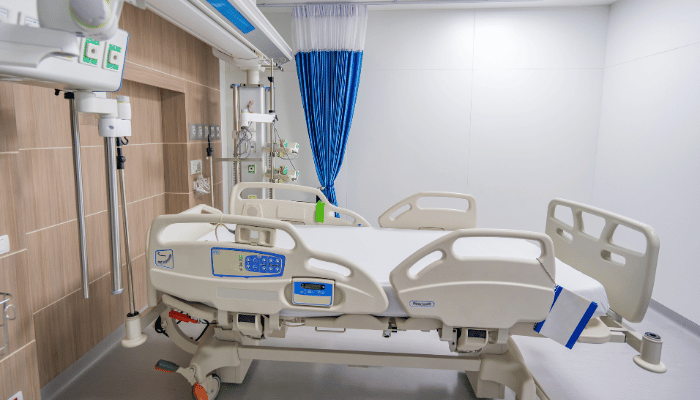
Critical care units (CCUs), also known as intensive treatment units (ITUs), and intensive care units (ICUs), utilise ICU beds (ITUs). Serious patients are treated and cared for in these specialised facilities. Every patient has one or two dedicated nurses caring for them, and they are all closely watched. To meet high-dependency care needs, additional equipment, such as ventilators or feeding tubes, is frequently used.
Other hospital wards rarely have this specialized technology. But hospitals everywhere require more beds. What makes ICU beds unique from other hospital beds seen inwards? In comparison to other hospital beds, the characteristics and specifications of ICU beds are examined in this article.
Technically speaking, an ICU bed is any bed used in a critical care unit. Instead of referring to a particular kind of bed, the word describes the location of a bed within a hospital. similar to how a nurse may say that a patient “needs a cardiology bed” to indicate that they should be moved to a bed on the cardiology ward.
IMPORTANT FEATURES OF ICU BEDS
By eliminating a lengthy and exhaustive list of specifications for ICU beds, we are able to decide which beds will best serve patient and staff needs when placing an order.
However, there are a number of traits and capabilities that are crucial in a critical care scenario. Therefore, the majority of ICU beds will also have the following four characteristics:
CPR RELEASE
The majority of doctors and nurses who specialise in critical care would view CPR discharge as crucial for ICU beds. With the touch of a button or lever, medical professionals can use this feature to flatten the bed platform. This immediately provides the flat, firm surface required for CPR in an emergency (cardiopulmonary resuscitation).
IV poles are used to safely suspend any liquids or medications that need to be drip-fed to a patient. Usually, they have two or four hooks, each of which can hold a fluid container.
In ICUs where patients frequently need several drugs at once, having an IV pole with multiple hooks is advantageous.
In an emergency, it is simpler to relocate a patient if you select an ICU bed with an IV pole built in. Medical personnel simply have to concentrate on moving one piece of equipment, rather than having to wheel both the bed and the IV pole.
REMOVABLE HEAD AND FOOT BOARDS
In intensive care units, beds with retractable heads and footboards that lock securely into place when in use are frequently favoured.
This design has the following two main advantages:
- Removing the headboard enables medical personnel to surround the patient in an emergency. As a result, there is more room to manoeuvre around the patient and simpler access to the head for supporting respiration.
- The act of prone positioning is simpler. In this treatment, the patient is turned from face up to face down.


 Physiotherapy
Physiotherapy Elder Care
Elder Care Medical Equipment
Medical Equipment Doctor Consultation
Doctor Consultation Nursing
Nursing Trained Attendants
Trained Attendants Lab Tests
Lab Tests Mother & Baby Care
Mother & Baby Care Critical Care
Critical Care Ambulance Service
Ambulance Service Dead Body Freezer
Dead Body Freezer